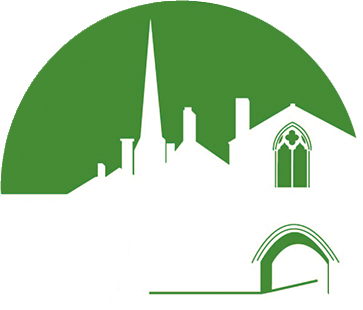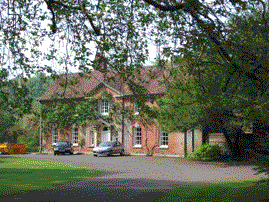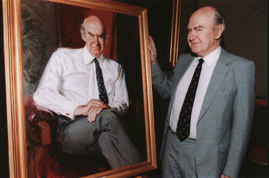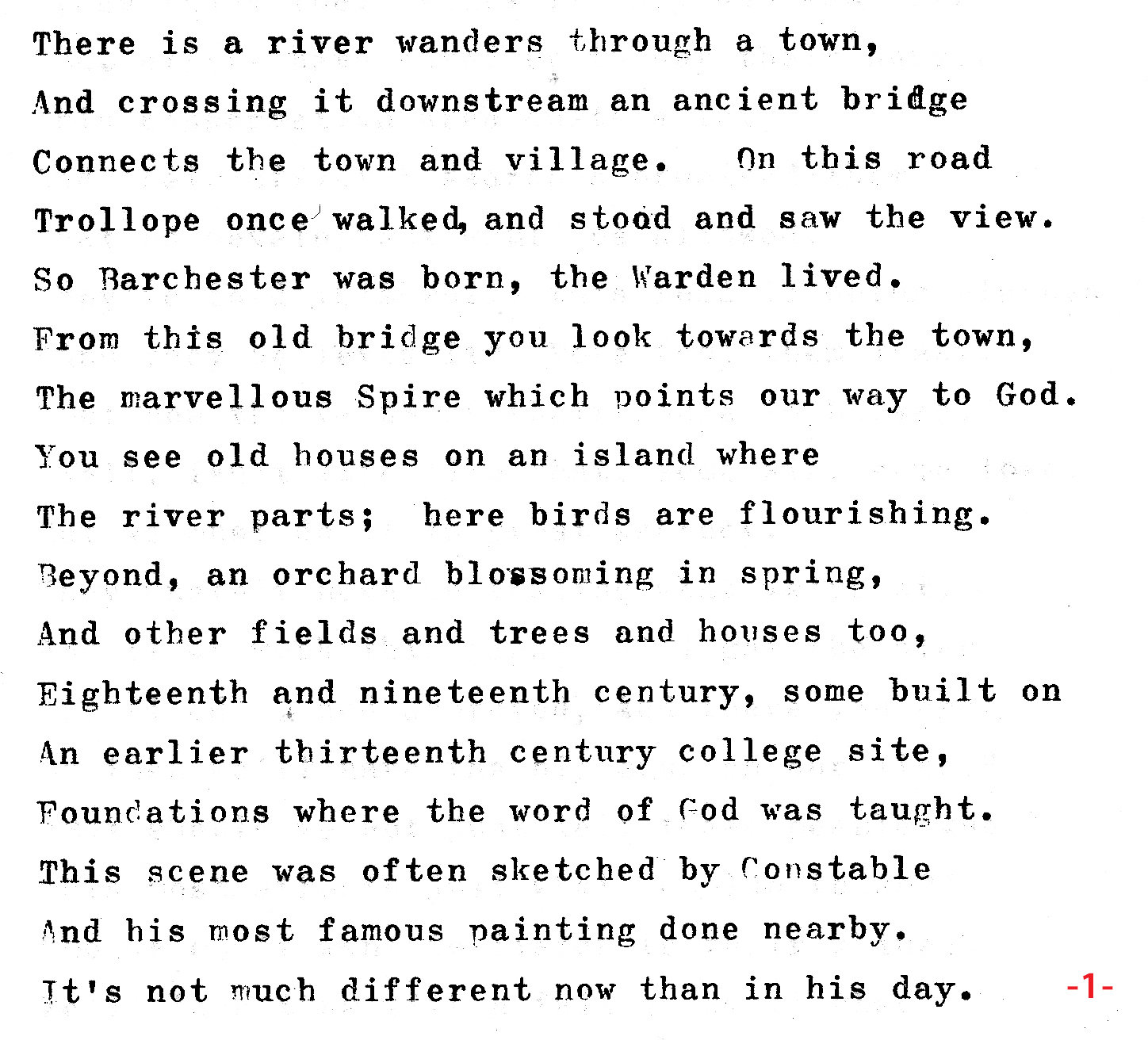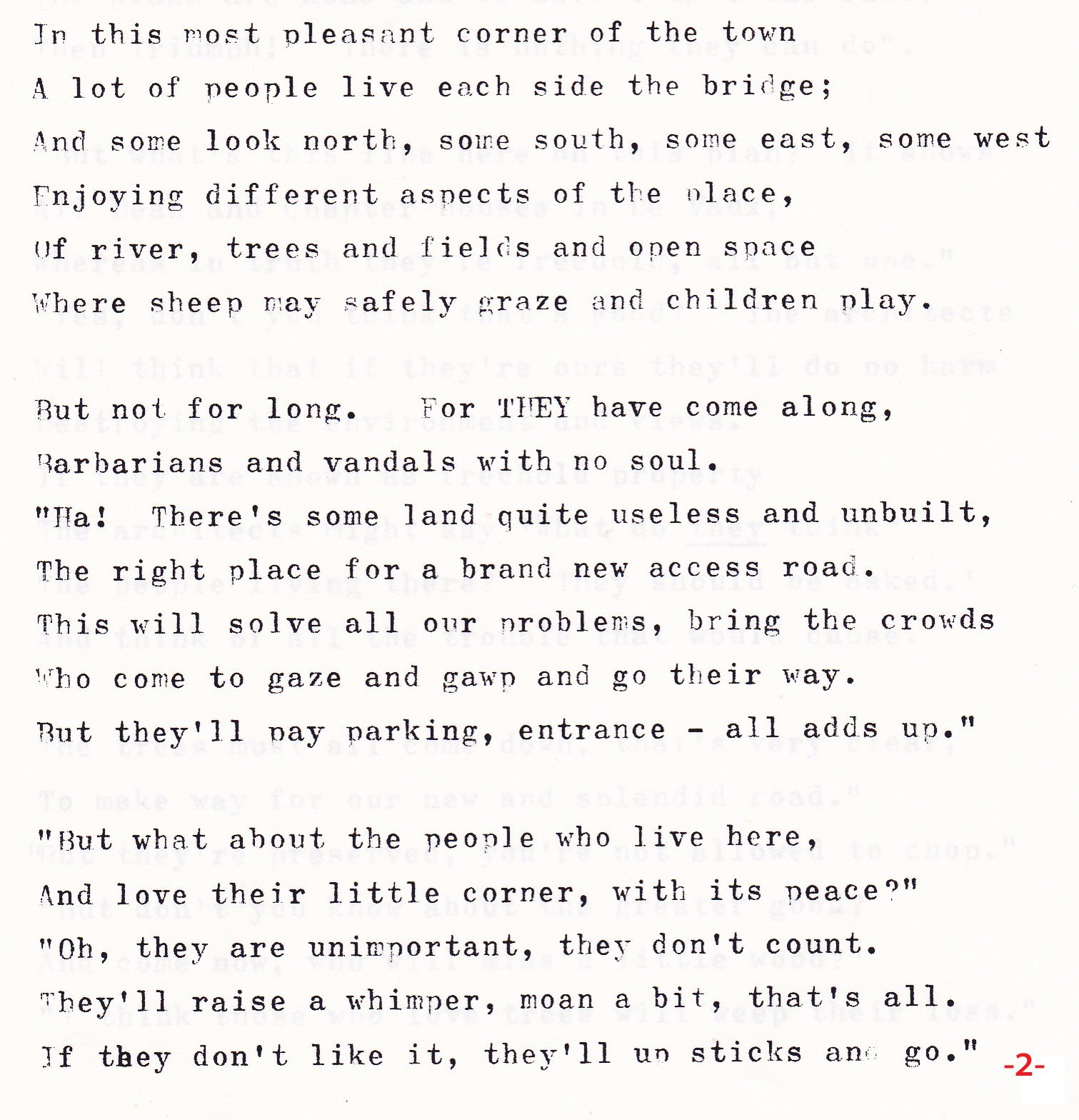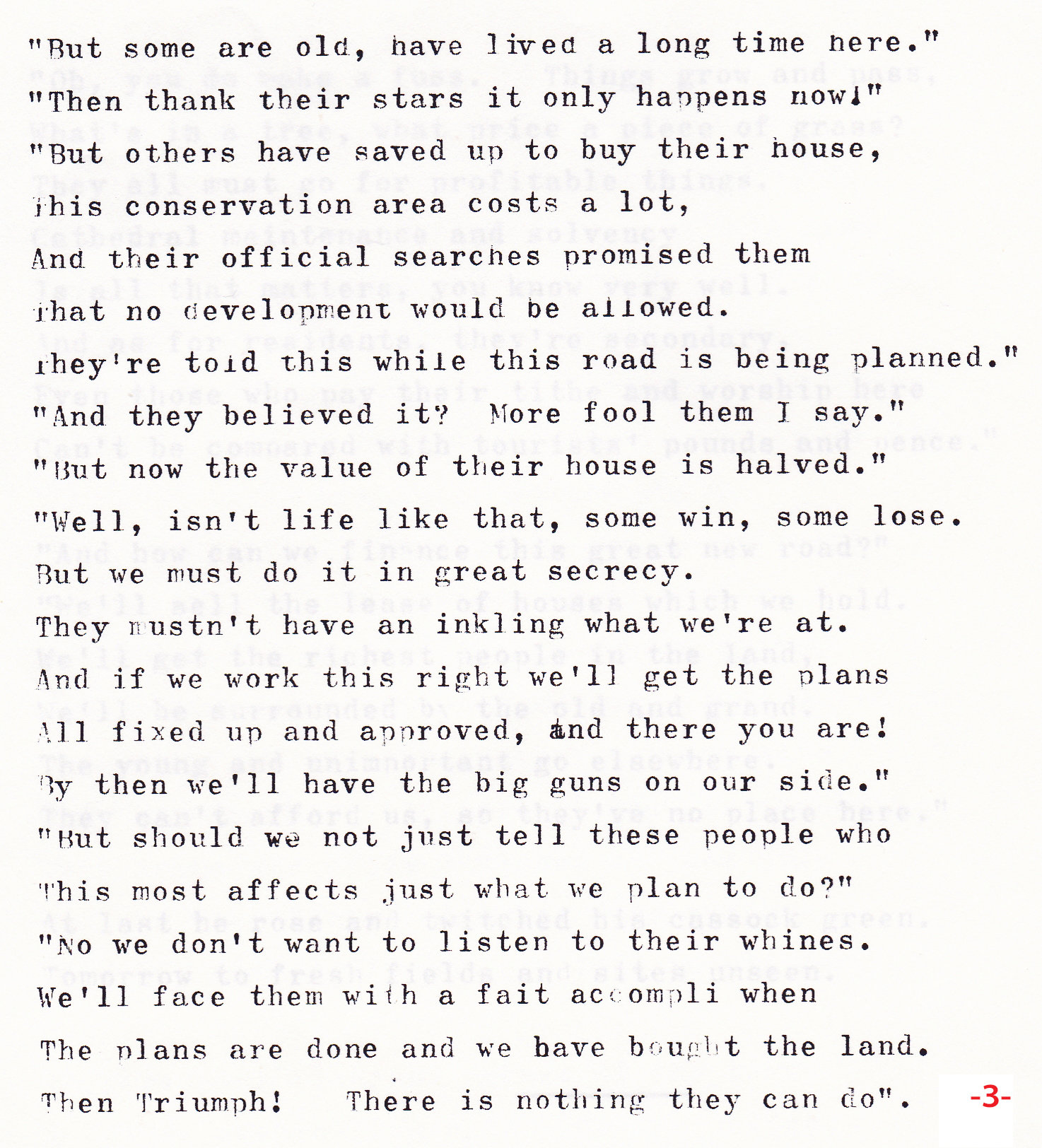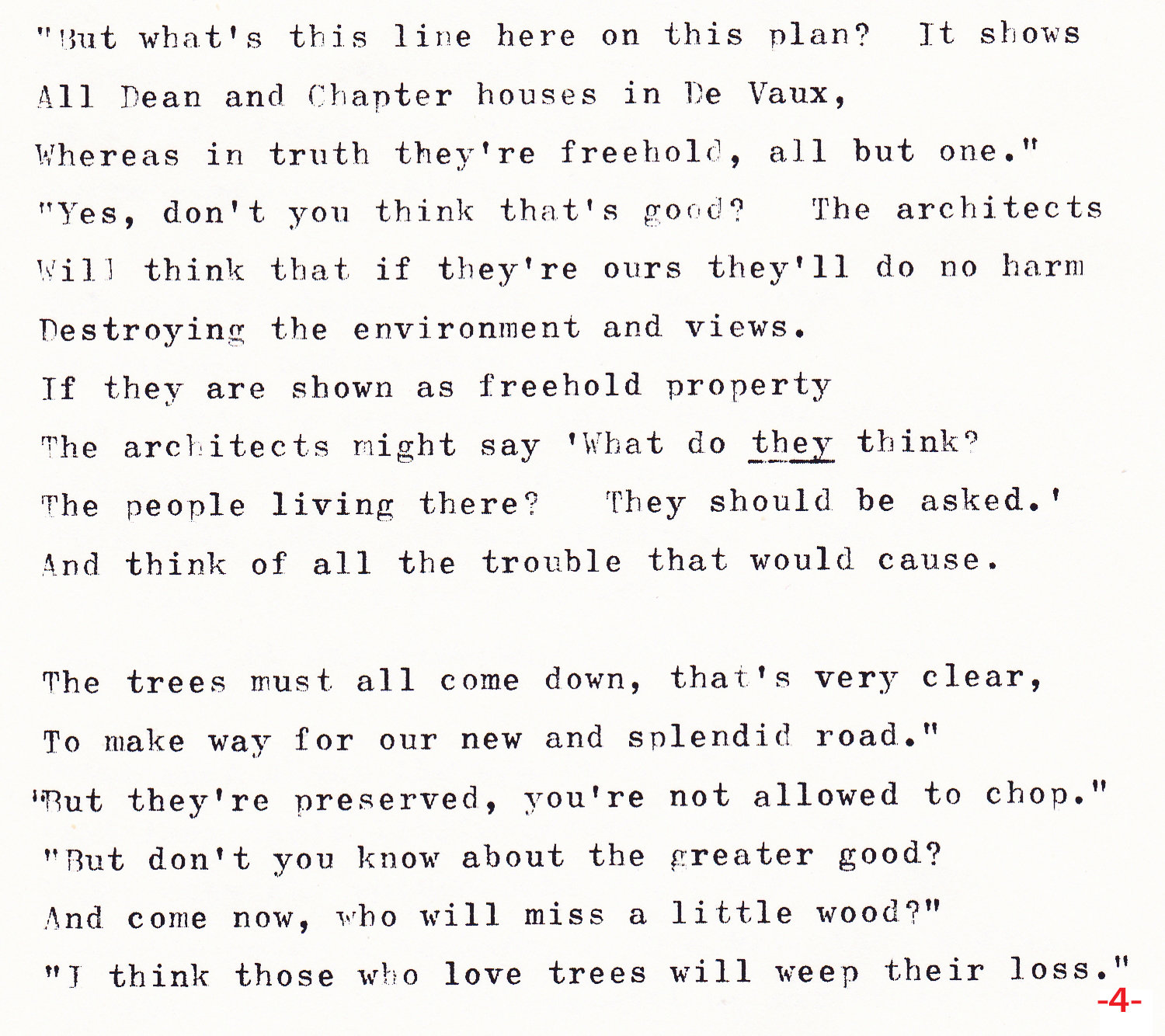Salisbury Cathedral Close Preservation Society
Supporting Excellence in Heritage Estate Management
SCCPS History
A Brief History …and a Poem
A Brief Account of the Origins and Development of The Salisbury Cathedral Close Preservation Society
By RCH Briggs
Salisbury Cathedral Close is as old as the cathedral for which it provides a setting and the city it adjoins. Its 83 acres make it the most spacious close in the country; its 13th century layout is unique. For the first 40 years of its existence it was a busy building site, and it continued so in the early 14th century when the spire, Salisbury Cathedral’s most distinctive feature, was built. The Close has been celebrated by many artists, in particular by our most distinguished painters. Constable and Turner.
The Close was always physically separated from the city to the north (which occupied some 260 acres) and became more isolated from it with the construction in 1327-42 of the wall that still surrounds it. The population it served in the 13th century was very different from that of later centuries, being wholly clerical, numerous, well to do and well connected, international and subordinate to Rome, and often called upon to assist in administering the kingdom; the Close was an ecclesiastical precinct. But the ‘fair houses of stone’ which the Chapter decreed in 1213 should be built for the canons of the Cathedral, and which occupied some 50 acres gave a domestic character to the Close that has survived to this day. The Close attained its present aspect in the 18th century when, during the episcopate of Bishop Shute Barrington, it was landscaped. That involved levelling the greensward and removing or flattening the gravestones of the churchyard, which occupied 24 acres of the Close. William Dodsworth, in An Historical Account of the Episcopal See and the Cathedral Church of Sarum or Salisbury, 1814 gave this account of the Close.
South Canonry
‘… a new circular underground drain was formed, three feet in diameter, which runs from the west to the east end and receives all the water from the north side of the church. The ground itself was raised and levelled, and spacious gravel walks were made to the principal entrances….
The prospects towards the south-west are marked by similar features; but they acquire additional beauty from picturesque groups of trees, of which the foliage is contrasted with the mellow hue of the stone.’
Following the redistribution of income of cathedrals, and the abolition of prebends, achieved by the Cathedrals Act 1840, cathedrals, including Salisbury, became increasingly dependent on income from visitors. The increasing complexity of life in the second half of the 20th century has impinged significantly on the responsibilities of the Dean and Chapter. In particular the local authorities, through the planning regime and road traffic management, English Heritage, both as a supervisor and a grant-maker, and the Cathedrals Fabric Commission for England. During the 1980s work began on the repair of the fabric of Salisbury Cathedral and is still continuing. It was supported by grants from central government, and a public appeal was launched, supported by the Prince of Wales, to meet the cost of repairing the spire. This activity attracted much public attention to the Cathedral and incidentally to the Close. The Dean & Chapter recognized that a theological training did not equip the Cathedral’s top administration to manage all the multifarious aspects of their responsibility and found it expedient to obtain professional advice on matters relating to both the Cathedral and the Close. An example is the report, Salisbury Close, Problems and Possibilities, an Architectural Landscape Analysis, prepared by the Brandt Potter Hare Partnership in 1971. On the critical issue of tourism the Report commented:
‘…the promotion of tourism is a highly skilled activity and in planning facilities and activities the Dean & Chapter would be wise to obtain advice from a specialist in the field. In considering methods of maximising income from tourists by the provision of all types of facilities, bookstalls, restaurants, exhibitions, ‘son et lumiere’ etc it is vital that
(i) the greatest importance is given to the use of the Cathedral as a place of worship and Christian mission, and
(ii) that the conservation of the beauty and atmosphere of the Cathedral and the Close should always be given top priority, at best in order to preserve the unique quality of the environment, and at the lowest level to ensure that visitors do not directly or indirectly destroy that which they have come to see.
Ceiling detail of Salisbury Museum
Lecture Hall
In 1990 the Dean & Chapter, jointly with English Heritage and the Cathedrals Fabric Commission, commissioned a study which came to be known, after its author, as the Rothermel Thomas Report. It was presented to its sponsors on 29 January 1991. The Report made radical proposals for the future of both the Cathedral and the Close, the most controversial of which was the creation of a new access in the south of the Close. Not a few of the Report’s proposals were controversial, and it was the catalyst for the formation of the Salisbury Cathedral Close Preservation Society. The concern which some of the proposals of the Rothermel Thomas Report generated prompted the Dean & Chapter in March 1991 to issue an interim response to the Report, published in the Cathedral News. It pointed out that:
- The problems facing us in this decade are particularly challenging …
- [The Report’s] primary aim is to improve the total experience of Cathedral and Close for visitors, the citizens of Salisbury, and the residents and users of the Close.
- Any alternative suggestions for improvements which would meet some of the acute problems it describes will be welcome and considered. What is needed is a widely agreed policy document for the management of the Close for the next 25 years.
- Two aspects (of the Report) have received major public attention, the proposal to build a new access road to the south of the Close and pedestrianise the High Street Gate; and a proposal to build a footbridge over the Avon to allow pedestrian access from the. Lush House Car Park.
- Before any decisions are taken we are determined that the Report should have a fair hearing and its proposals be widely understood.
As the Report itself observed: ‘the Report is a springboard for fund-raising ‘ (para. 7.21.1) It also served as a catalyst for the Close Preservation Society. A Steering Group met on 9th March to plan a public meeting that was held on 15th March at which there was unanimous support for the formation of the Salisbury Cathedral Close Preservation Society. The new society’s inaugural meeting was held on the 13th April. A committee of 11 members was elected and met on the 15th April, to consider policy, action and consultations. A critique of the Rothermel Thomas Report was prepared as well as a riposte to the Chapter Clerk’s paper “The Rothermel Thomas Report; some questions answered” and an information bulletin for members was instituted.
There was much correspondence with the sponsors of the Rothermel Thomas Report and other relevant authorities, and with the press. The Committee appointed Dr Robert Pinkerton chairman of the Society and Mr Cyril Monk vice-chairman. Three persons were co-opted and specialised roles were allocated. A draft constitution for the Society, prepared by Mr John Hardiman, was examined in detail, circulated to all members and presented for acceptance at the next General Meeting.
Following Dr Pinkerton’s untimely death in May 1991 Mr Cyril Monk became Acting Chairman . At a meeting of the Committee held on the 14th May, an interim critique of the Rothermel Thomas Report was considered, amended and adopted. It was agreed to lobby District councillors, and to arrange a meeting of the Committee and the Councillors on the 5th June; also to arrange media coverage and a membership drive. A General Meeting of the Society was held on the 2nd July 1991, it appointed Ronald Briggs Chairman.
Immediate tasks agreed upon at the Committee meeting of the 23rd July ‘9l were to study relevant reports, memoranda and press cuttings of the last 35 years, to ensure that the membership was well informed about the background to the Rothermel Thomas Report and the Society’s criticisms of it, as well as about the Society’s general policy, to widen the membership, to establish and maintain contact with other organisations interested in the Close, to examine the Cathedral’s finances and to make a video presentation about the Close and the Society. The Committee also agreed ‘to adopt a good-humoured, constructive and firm approach and avoid being abrasive, indignant or strident’.
The first year of the Society’s existence was one of considerable activity. Although the Dean and Chapter were at pains to emphasise that the Rothermel Thomas Report was a Consultative document and that no decisions on its recommendations had been taken, there was considerable and widespread anxiety about the proposals. Some indication of this was the steady increase in the Society’s membership.
Early in May Mr Stephen Gauntlets, the then Chapter Clerk issued a memorandum, The Rothermel Thomas Report – Some Questions Answered.
In a riposte entitled Some Answers Questioned, (issued on 18 May 1991), the Society drew attention to discrepancies and contradictions between the Rothermel Thomas Report and the Chapter Clerk’s gloss on it. The riposte included a reminder of the widespread outcry generated in November 1984 by the Dean & Chapter’s ill-considered planning application for a coach park at the southern end of the Close which had prompted letters of opposition from John Piper. Lord David Cecil, Iris Murdoch and Hugh Casson. While recognising the Cathedral authorities’ dependence on visitors, the Riposte emphasised that provision for visitors should not substantially detract from the essential qualities of the Close; anything more should be resisted.
From the beginning motor traffic in the Close was recognised by the Society as a major problem. The Rothermel Thomas Report originally contained no traffic survey and later inclusions were inadequate. The Society insisted that there should be a detailed survey and invited a road traffic consultant, Dr M Jenks, to comment on the issues involved in the management of traffic in the Close. Dr Jerks confirmed that ideas for traffic control and restraint could only be realistic if done on the basis of a proper traffic survey. The different groups of car users entering the Close had different needs and should he controlled in different ways. The narrow entrances and somewhat inconvenient route through the Close should be seen as a discouragement for motor traffic and so as a positive benefit, and the problems of the Close should he considered in the context of parking and traffic management in Salisbury as a whole.
On 13th September 1991 a seminar on the Rothermel Thomas Report, arranged by the Dean, was held to which interested parties, including the Society, were invited to send representatives. The Society’s comments at the seminar were based on Dr Jerks’ critique, and emphasised that cooperation and consensus were the key to solving the problems concerning the Close. The Dean & Chapter commissioned the Bristol Polytechnic (as it then was) to produce a traffic: report, which was published in November 1991 in two volumes, price £42. The Society welcomed the Report which confirmed its suspicions, and which it considered a vindication of its view that the traffic problems of the Close could substantially be overcome by small and inexpensive improvements in traffic management and some restriction of pay-parking. The Bristol Polytechnic Report offered no justification for a new southern access to the Close. A further report on traffic in the Close, by what had by then become the Severnside Research and Consultancy Unit of the West of England University, was published in January 1993. Subsequently a working party of the Society on motor traffic in the Close, under the chairmanship of Mr John Hardiman, focussed on fact-finding and analysis, undertook a considerable number of surveys of Close traffic and produced reports published by the Society.
As the limitations of the Rothermel Thomas Report became more widely recognised and the Dean and Chapter’s enthusiasm for it appeared to diminish, concern that drastic changes would be made to the Close slackened and thoughts turned to longer-term and deeper issues concerning the future of the Close. There was a gradual shift of emphasis from protection of the Close to its enhancement – from combativeness to cooperation.
The Dean & Chapter commissioned a report from the environmental consultants Michael Lear and Beverley Woods. Representatives of the Society attended the presentation of their report on the proposed landscaping of the Close in May 1993. The Committee agreed to offer modest support from the Society for the planting of specific trees. One outcome of the Lear Report was the establishment of the Cathedral Landscape Committee and the Society were invited to provide a member. (The committee was subsequently dissolved in early 2022).
Brigadier Christopher Owen, LVO, OBE, MDA, succeeded Mr Stephen Gauntlet as Chapter Clerk in February 1992. In a letter to the Salisbury Journal dated 25th June 1992 the Chapter Clerk asserted the Cathedral’s need to generate income from a variety of sources, of which parking charges were an important contributor. In a talk to members of the local Chamber of Commerce & Industry, reported in the Salisbury Journal for 1st April 1993, the Dean referred to the high cost of maintaining the United Kingdom’s 40 or so cathedrals. Salisbury was running a budget deficit of £210,000; in 1993 £430,000 was being spent on the fabric alone. State support for the maintenance of cathedrals was currently some £9M; the sum needed was £ 120M. The Archbishop’s Commission on Cathedrals had estimated that the cost of maintaining Salisbury Cathedral for 10 years would be £14M.
Tourism has long been the principle source of revenue for Salisbury Cathedral. In 1993 it attracted some 700,00 visitors, but, as the Rothermel Thomas Report recognised, there is a cost side to tourism. The Report frankly noted:
..,the Cathedral is in some ways an obsolete building for many of the religious and secular activities it has to accommodate (Ch 2.3, c.2, para7).
The Society’s first exhibition was displayed in the foyer of Salisbury Public Library during June 1992, and subsequently in a number of other County libraries.
A 12-minute videotape on the Close, devised by Rachel and David Blissett and made with the aid of Peter Phillips of the Department of Teaching Media, Southampton University, was issued in September 1992 and attracted much favourable comment; it was sold to members at £6.
The late Sir Robin Ibbs, KBE, became the Society’s Chairman in January 1995. His meetings with the Chapter Clerk before every meeting of the Society’s Committee became a regular feature. Face to face meetings rather than correspondence became a usual method of communication. The late Sir Edward Heath. KG, MBE, became the Society’s patron in 1997.
Sir Robin Ibbs KBE
Poem about the threat to The Close
by one of the Society’s founding members
